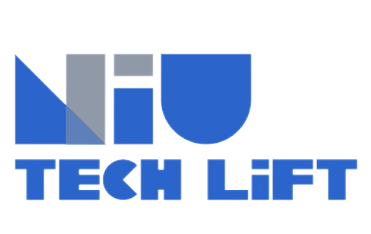
Elevating Faith and Inclusion: A Global Perspective on Mosque Accessibility Design
At Indonesia’s Jami’ Al-Hurriyah Mosque, the sloping roof forms a symbolic representation of "Allah," yet more profound than its architectural beauty is its unwalled courtyard and multi-level stair-seating. This passively designed sacred space embeds community interaction into its spiritual DNA. When elderly Muslims approach the prayer hall in wheelchairs, a critical question emerges: How can vertical mobility become a bridge connecting faith and equality, rather than a barrier to devotion?
As the shadow of the minaret stretches at sunset, a modern mosque equipped with barrier-free elevators quietly writes a new chapter of faith and inclusion.
At Indonesia’s Jami’ Al-Hurriyah Mosque, the sloping roof forms a symbolic representation of "Allah," yet more profound than its architectural beauty is its unwalled courtyard and multi-level stair-seating. This passively designed sacred space embeds community interaction into its spiritual DNA. When elderly Muslims approach the prayer hall in wheelchairs, a critical question emerges: How can vertical mobility become a bridge connecting faith and equality, rather than a barrier to devotion?
I. The Accessibility Dilemma in Sacred Spaces
- The Unseen Threshold of Equality:Traditional mosque designs, with stepped entrances and multi-level prayer areas, create physical divides. A significant number of elderly Muslims reduce mosque visits due to mobility challenges, while wheelchair users’ participation in Friday prayers remains notably low. When a single step can disconnect worshippers from the Divine, architecture becomes a paradox of spiritual equality.
- Unique Cultural Challenges:Unlike standard public buildings, mosque elevators must accommodate specific needs:→ Advanced moisture resistance for pre-prayer ablution areas→ Intelligent crowd-management systems for peak prayer times→ Strategic mirror placement avoiding the Qiblah direction
In Malaysia’s Penang, a century-old mosque’s renovation faced community protests over such details, leading to elevator redesign.
II. Balancing Tradition and Modernity
1. Space-Integrated Design
External ultra-shallow pit elevators with corridor connections preserve original structures while absorbing vibrations. At Cairo’s Sultan Hassan Mosque, elevator shafts were discreetly embedded within the minaret’s shadow zone, fully preserving the sanctity of ancient stone facades.
2. Sensory Harmony Interface
- Control panels: Arabic/Braille buttons with bilingual voice guidance
- Lighting: Ceiling softlights replicating the Kaaba’s celestial glow
- Ventilation: Enhanced airflow for crowded gatherings
3. Community-Led Governance
Istanbul’s Blue Mosque pioneered innovative approaches:
→ Imam mediation for cost-sharing agreements
→ Vertical Zakat Program integrating maintenance into religious giving
→ Non-material compensation for ground-floor residents
III. Universal Philosophy for Timeless Architecture
When accessibility elevators are designated "Compassion Lifts" with inclusive signage, they reveal a profound truth: Barrier-free design is an act of collective care rooted in faith.
Human-Centric Engineering:
- Spacious cabins accommodating wheelchairs and stretchers
- Gentle door-closing mechanisms preventing robe entrapment
- Seamless leveling ensuring smooth transitions
IV. Global Innovations
1. Desert Wisdom: Sheikh Zayed Mosque, Dubai
Phase-change materials embedded in shafts maintain comfortable temperatures using night-cooled energy.
2. Arctic Adaptation: Oslo Islamic Centre, Norway
Specialized door-track heating and cold-weather fluids ensure operation, with traditional wool rugs lining cabin floors.
3. Heritage Integration: Great Mosque of Córdoba, Spain
Transparent shafts satisfy archaeological reversibility requirements while transforming historic arches into moving spiritual panoramas.
Conclusion: The Civilizational Dimension of Vertical Mobility
When centenarians at Alexandria’s mosques ascend safely via elevators with guardian AI systems, each lift becomes a vessel of faith and inclusion.
As specialists in elevator export solutions, we’ve delivered customized accessibility systems to mosques across the Middle East and Southeast Asia. From ultra-shallow pit designs to prefabricated steel shafts, from advanced ventilation cabins to voice-operated controls, we engineer every centimeter to honor sacred traditions.
When elevator doors open in a mosque, they transcend mere elevation—bridging the measure of civilization and dignity.
